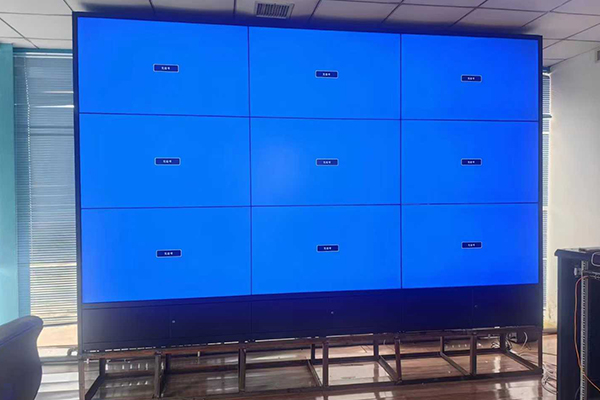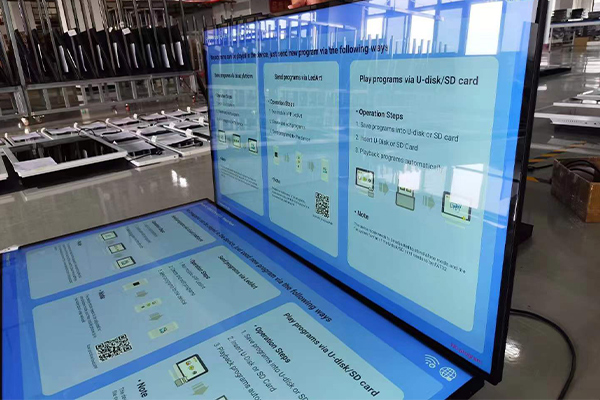The difference between LCD splicing screen and wall mounted LCD advertising machine
The LCD splicing screen and wall-mounted LCD advertising machine have significant differences in function, design and application scenarios. The following is a summary of the main differences:
The LCD splicing screen and wall-mounted LCD advertising machine have significant differences in function, design and application scenarios. The following is a summary of the main differences:
1. Core functions and uses**
- Function: multi-screen splicing display, support split screen, cross-screen linkage, real-time signal source access (such as monitoring video, data large screen).
- Use: security monitoring center, command and dispatch center, conference room, exhibition display and other scenes that require large size and multi-screen collaboration.
Wall-mounted LCD advertising machine
- Function: a single screen loops to play preset content (pictures, videos, web pages), supports remote control and timed playback.
- Use: shopping mall advertising, elevator posters, restaurant menus, information release and other one-way communication scenes.
2. Hardware structure and display effect**
- Structure: It is composed of multiple LCD units spliced together, with narrow borders (such as 3.5mm ultra-narrow borders), and there are physical seams after splicing.
- Display effect: high resolution (such as multiple 4K screens spliced into 8K), high brightness (700cd/m² or more), suitable for long-distance viewing.
Wall-mounted LCD advertising machine
- Structure: Single-screen all-in-one machine, usually borderless or ultra-thin design, thickness <50mm.
- Display effect: Full HD/4K, moderate brightness (250-500cd/m²), and brighter colors when viewed from close range.
3. Installation and scalability
LCD splicing screen
- Requires professional brackets or cabinets to fix, supports horizontal/vertical free splicing (such as 2x2, 3x3, etc.).
- Strong scalability, screen units can be added later, and support matrix controller to manage multiple signal sources.
- Wall-mounted LCD advertising machine
- Simple installation, directly mounted on the wall or suspended, usually fixed size (such as 43 inches, 55 inches).
- Weak scalability, stand-alone operation, if multiple screens need to be synchronized, an additional central control system needs to be configured.
4. Software and interaction
- Supports multi-window overlay, signal roaming, cross-screen display, and is compatible with multiple interfaces (HDMI, SDI, optical fiber).
- Need to cooperate with splicing processor or video wall software to manage content.
Wall-mounted LCD advertising machine
- Built-in Android/Win system, supports USB/SD card import of content, or remote update in the cloud.
- Some models support touch interaction (such as query, navigation), but mainly one-way output.
5. Cost and maintenance
LCD splicing screen
- Cost: high unit price, and additional purchase of splicing processor and installation service.
- Maintenance: splicing unit needs to be disassembled in case of failure, and repair is complicated.
Wall-mounted LCD advertising machine
- Cost: low (ordinary models cost thousands of yuan), plug and play.
- Maintenance: modular design, power supply or screen can be replaced quickly.
Selection suggestions
- Need 7x24 hours monitoring or multi-screen collaboration → LCD splicing screen
- Need to change content frequently, limited budget → Wall-mounted advertising machine
- Focus on seamless visual experience → Consider LED screen or OLED flexible screen (non-LCD solution)
Choose according to specific needs, both are irreplaceable in professional fields and commercial scenarios.


